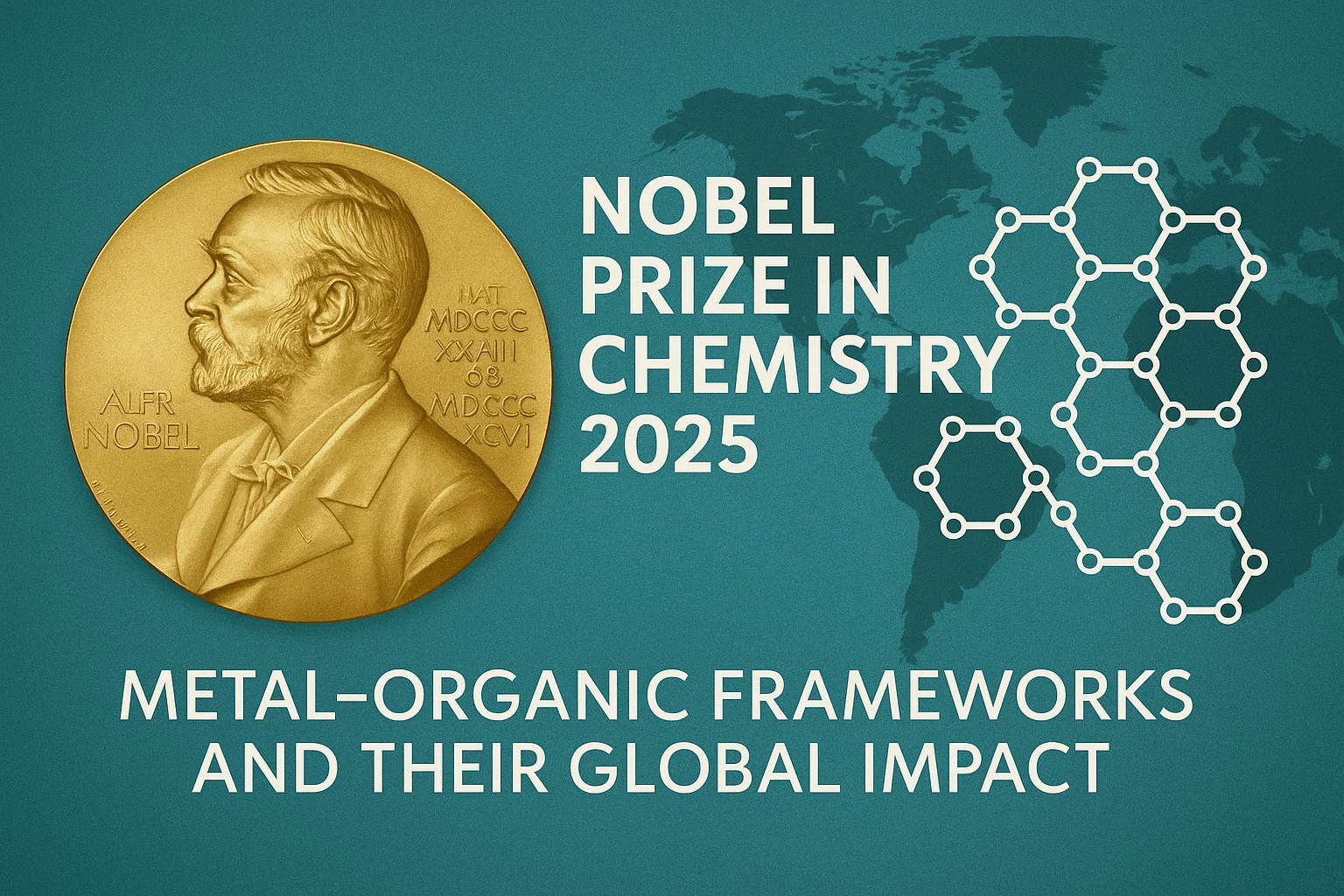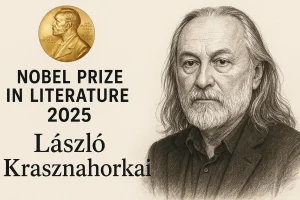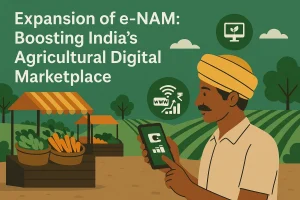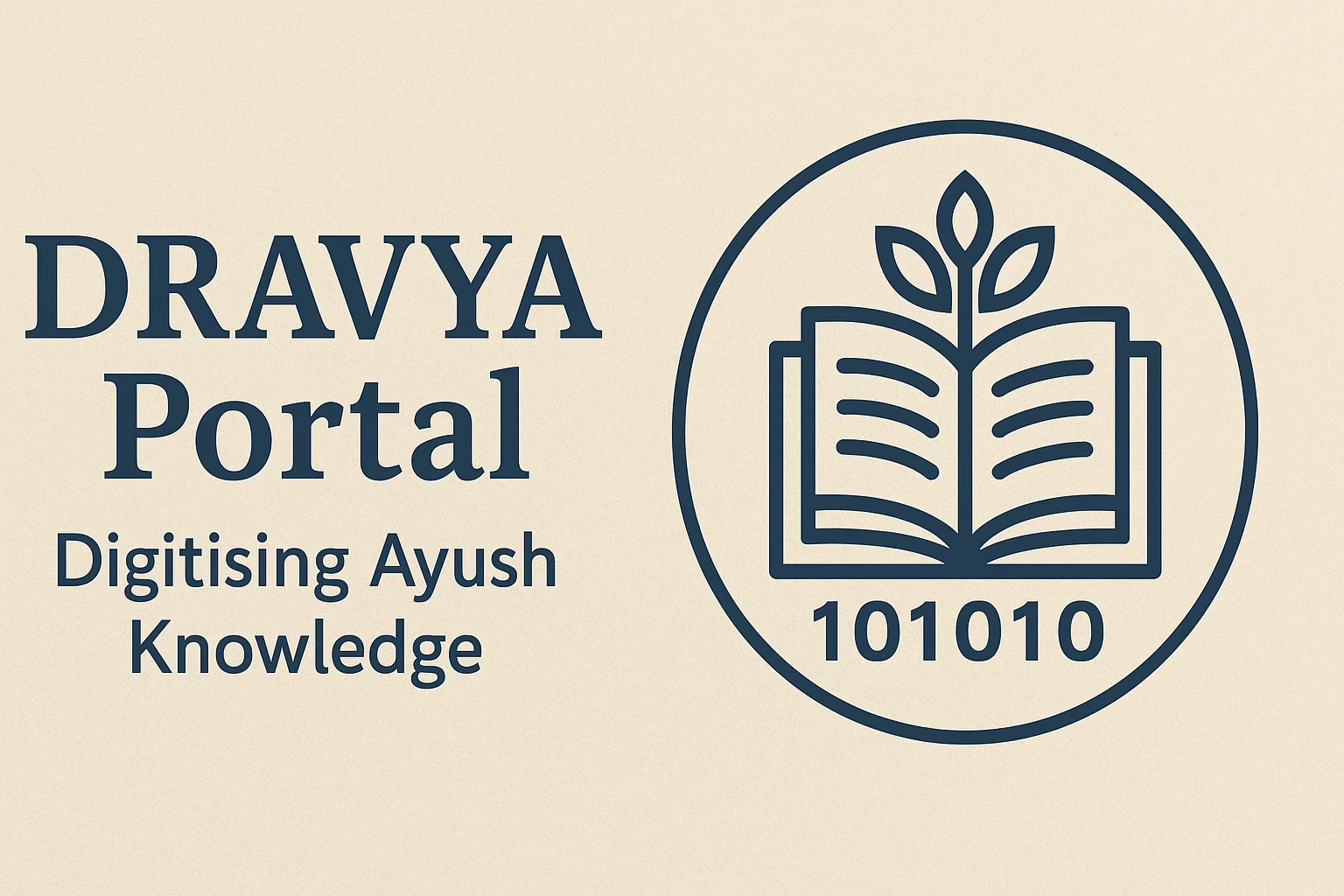Nobel Prize in Chemistry 2025 – Metal–Organic Frameworks and Their Global Impact
The 2025 Nobel Prize in Chemistry honours Richard Robson, Susumu Kitagawa, and Omar Yaghi for discovering Metal–Organic Frameworks (MOFs) — porous materials revolutionising carbon capture, water purification, and sustainable energy.
Introduction
The 2025 Nobel Prize in Chemistry has been jointly awarded to Richard Robson (Australia), Susumu Kitagawa (Japan), and Omar Yaghi (Jordanian–American) for their discovery and development of Metal–Organic Frameworks (MOFs) — a breakthrough that has transformed chemistry, materials science, and environmental sustainability. These structures have redefined how scientists think about molecules, gases, and even clean water, offering new hope for combating climate change, pollution, and water scarcity.
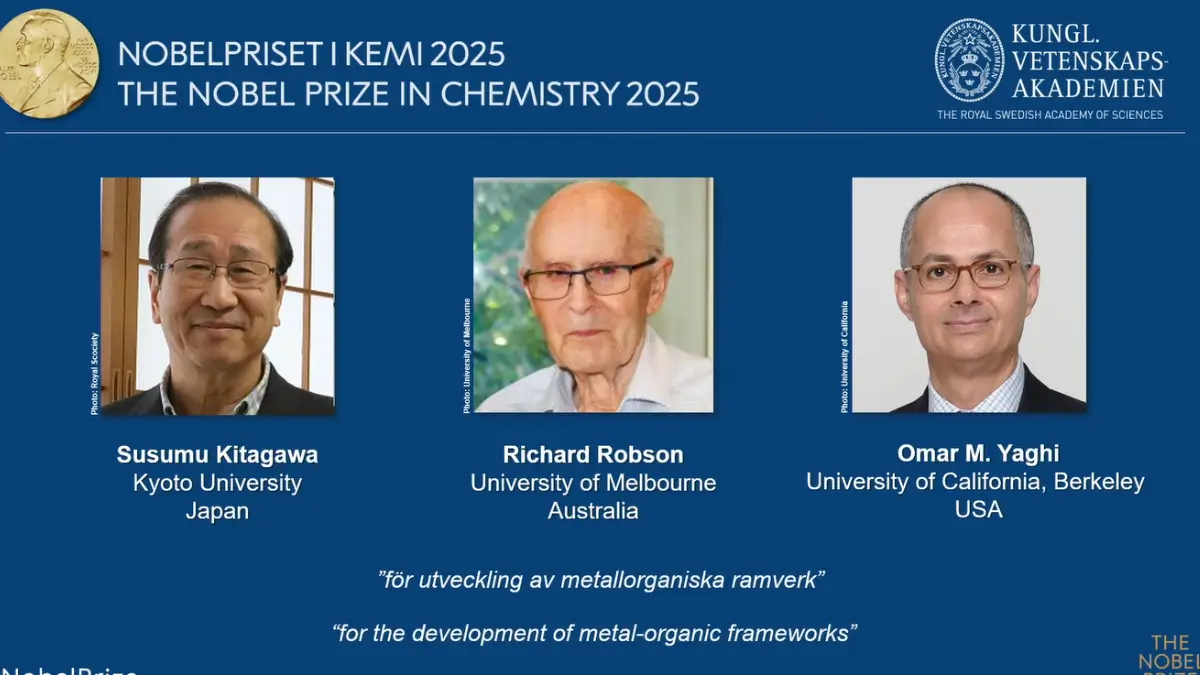
What Are Metal–Organic Frameworks (MOFs)?
Metal–Organic Frameworks (MOFs) are hybrid materials made by linking metal ions or clusters with organic linkers, creating highly porous, crystalline networks. They possess enormous internal surface areas, sometimes equivalent to several football fields within a single gram of material. This makes them exceptionally effective at storing, separating, and catalysing molecules.
The discovery of MOFs spans over three decades and reflects a remarkable international collaboration of ideas and innovation:
-
Richard Robson (University of Melbourne, 1970s): First conceptualised linking metal ions with organic molecules to create spacious, lattice-like crystalline frameworks. His pioneering structural vision laid the groundwork for molecular architecture in three dimensions.
-
Susumu Kitagawa (Kyoto University): Developed the first porous yet flexible MOFs, demonstrating that gases could move in and out of these frameworks. His “breathing materials” concept proved that MOFs could behave like living systems — responsive, adaptable, and dynamic.
-
Omar Yaghi (University of California, Berkeley): Coined the term “MOF” and created stable, tunable frameworks with practical applications. His MOFs can harvest water from desert air, capture carbon dioxide, and remove toxic pollutants such as PFAS (per- and polyfluoroalkyl substances) from water.
Why Is the Discovery So Significant?
1. Environmental Applications
MOFs represent a new frontier in sustainable chemistry. Their selective absorption properties allow them to tackle some of humanity’s most pressing challenges:
-
Carbon Capture and Climate Mitigation: MOFs can trap carbon dioxide (CO₂) efficiently, offering cleaner industrial emissions and advancing carbon sequestration technologies.
-
Water Purification: Certain MOFs remove toxic chemicals, PFAS, and pharmaceutical residues from water, offering a path toward safer, cleaner drinking supplies.
-
Water Harvesting from Air: MOFs can extract moisture even from arid desert atmospheres, providing a sustainable freshwater source where traditional methods fail.
2. Energy and Industry
In the energy sector, MOFs could revolutionise hydrogen storage and gas purification. Their adjustable pores and chemical tunability make them far more versatile than older materials such as zeolites.
“Soft MOFs” — flexible frameworks that adapt to external stimuli — mimic the behaviour of biological systems, opening avenues for smart materials and responsive catalysis. Industries are already exploring their use in fuel cells, gas sensors, and pharmaceutical production.
3. Scientific Advancement
The recognition of MOFs marks a turning point in chemistry by bridging inorganic and organic science, two disciplines once seen as fundamentally separate.
Today, researchers are using AI-driven molecular design and computational chemistry to create thousands of new MOFs with programmable properties — from energy-efficient catalysis to medical gas delivery systems. This integration of artificial intelligence with materials discovery heralds a new era of molecular engineering.
Conclusion
The 2025 Nobel Prize in Chemistry honours not only three visionary scientists but also a transformative idea: that molecules can be designed to solve global problems. Metal–Organic Frameworks stand as one of the most versatile classes of materials in history — capable of cleaning air and water, powering green energy, and even turning desert air into drinkable water.
In connecting chemistry to climate action and sustainability, Robson, Kitagawa, and Yaghi’s discovery symbolises the power of scientific imagination and international collaboration. MOFs remind us that the smallest structures can make the biggest difference — shaping a cleaner, safer, and more sustainable future for all.
Subscribe to our Youtube Channel for more Valuable Content – TheStudyias
Download the App to Subscribe to our Courses – Thestudyias
The Source’s Authority and Ownership of the Article is Claimed By THE STUDY IAS BY MANIKANT SINGH
